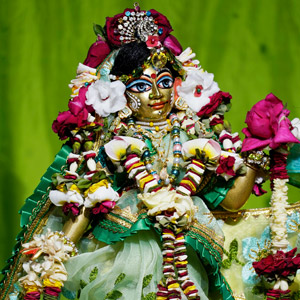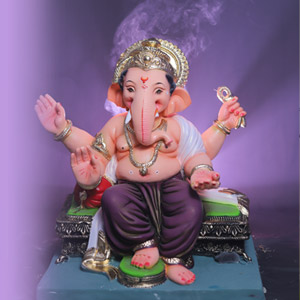बैसाखी का त्यौहार 2024 : तिथि , शुभ मुहूर्त , बैसाखी का महत्व , तथ्य …
Baisakhi Festival 2024 : Date,Auspicious Time, importance of Baisakhi Festival ,Facts…

Baisakhi, is a significant festival celebrated in the Sikh community and holds historical and religious importance. The festival usually falls on April 13 or 14, and it marks the creation of the Khalsa Panth, the Sikh community, by Guru Gobind Singh in 1699. Baisakhi also coincides with the harvest season in the Punjab region of India, adding an agricultural aspect to the celebrations.
बैसाखी, सिख समुदाय में मनाया जाने वाला एक महत्वपूर्ण त्योहार है और इसका ऐतिहासिक और धार्मिक महत्व है। यह त्योहार आम तौर पर 13 या 14 अप्रैल को पड़ता है, और यह 1699 में गुरु गोबिंद सिंह द्वारा खालसा पंथ, सिख समुदाय की स्थापना का प्रतीक है। वैसाखी भारत के पंजाब क्षेत्र में फसल के मौसम के साथ भी मेल खाता है, जो इसमें एक कृषि पहलू जोड़ता है।
Baisakhi festival in 2024 is on 13 April. ( 2024 में बैसाखी का त्योहार 13 अप्रैल को है । )
- Auspicious Time of Baisakhi ( बैसाखी का शुभ मुहूर्त ) :
Sankranti of Baisakhi time is 09:15 pm. ( बैसाखी की संक्रांति का समय रात 09:15 बजे है )
importance of Baisakhi Festival ( बैसाखी का महत्व ) :-
The importance of Baisakhi lies in its historical, religious, and cultural significance, particularly for the Sikh community. Here are some key aspects that highlight the importance of Baisakhi:
बैसाखी का महत्व इसके ऐतिहासिक, धार्मिक और सांस्कृतिक महत्व में निहित है, खासकर सिख समुदाय के लिए। यहां कुछ प्रमुख पहलू दिए गए हैं जो बैसाखी के महत्व पर प्रकाश डालते हैं:
- Foundation of the Khalsa: Baisakhi marks the day in 1699 when Guru Gobind Singh, the tenth Guru of Sikhism, established the Khalsa Panth. He initiated the first five Sikhs, known as the Panj Pyare, into the order by administering Amrit (nectar), symbolizing a commitment to the principles of Sikhism. This event is considered a pivotal moment in Sikh history.
खालसा की स्थापना: बैसाखी 1699 का वह दिन है जब सिख धर्म के दसवें गुरु, गुरु गोबिंद सिंह ने खालसा पंथ की स्थापना की थी। उन्होंने पहले पांच सिखों, जिन्हें पंज प्यारे के नाम से जाना जाता है, को अमृत पिलाकर इस क्रम में दीक्षित किया, जो सिख धर्म के सिद्धांतों के प्रति प्रतिबद्धता का प्रतीक था। इस घटना को सिख इतिहास में एक महत्वपूर्ण क्षण माना जाता है। - Promotion of Sikh Values: Baisakhi reinforces the core values of Sikhism, including equality, justice, selflessness, and community service. The establishment of the Khalsa emphasized these values, encouraging Sikhs to live virtuous lives and stand against oppression.
सिख मूल्यों को बढ़ावा देना: बैसाखी समानता, न्याय, निस्वार्थता और सामुदायिक सेवा सहित सिख धर्म के मूल मूल्यों को मजबूत करती है। खालसा की स्थापना ने इन मूल्यों पर जोर दिया, सिखों को सदाचारी जीवन जीने और उत्पीड़न के खिलाफ खड़े होने के लिए प्रोत्साहित किया। - Unity and Brotherhood: The creation of the Khalsa on Baisakhi fostered a sense of unity and brotherhood among Sikhs. The Panj Pyare, who were from diverse backgrounds, demonstrated the equality of all individuals irrespective of caste, creed, or social status.
एकता और भाईचारा: बैसाखी पर खालसा की स्थापना से सिखों में एकता और भाईचारे की भावना को बढ़ावा मिला। पंज प्यारे, जो विविध पृष्ठभूमि से थे, ने जाति, पंथ या सामाजिक स्थिति के बावजूद सभी व्यक्तियों की समानता का प्रदर्शन किया। - Religious Observances: On Baisakhi, Sikhs gather at gurdwaras (Sikh temples) for special prayers, kirtan (devotional singing), and readings from the Guru Granth Sahib. The religious ceremonies serve as a reminder of the teachings of the Gurus and the importance of living a righteous life.
धार्मिक अनुष्ठान: बैसाखी पर, सिख विशेष प्रार्थना, कीर्तन (भक्ति गायन) और गुरु ग्रंथ साहिब के पाठ के लिए गुरुद्वारों (सिख मंदिरों) में इकट्ठा होते हैं। धार्मिक समारोह गुरुओं की शिक्षाओं और धार्मिक जीवन जीने के महत्व की याद दिलाते हैं। - Cultural Celebrations: Baisakhi is not only a religious festival but also a cultural celebration. Nagar Kirtans (religious processions), traditional dance performances, music, and other cultural events take place to commemorate the day. These activities contribute to the preservation and promotion of Sikh heritage.
सांस्कृतिक उत्सव: बैसाखी न केवल एक धार्मिक त्योहार है बल्कि एक सांस्कृतिक उत्सव भी है। इस दिन को मनाने के लिए नगर कीर्तन (धार्मिक जुलूस), पारंपरिक नृत्य प्रदर्शन, संगीत और अन्य सांस्कृतिक कार्यक्रम होते हैं। ये गतिविधियाँ सिख विरासत के संरक्षण और प्रचार में योगदान देती हैं। - Harvest Festival: In addition to its religious and historical significance, Baisakhi is celebrated as a harvest festival in the agricultural regions of North India. Farmers express gratitude for the bountiful harvest, and the festival marks the beginning of the new agricultural year.
फसल उत्सव: अपने धार्मिक और ऐतिहासिक महत्व के अलावा, बैसाखी को उत्तर भारत के कृषि क्षेत्रों में फसल उत्सव के रूप में मनाया जाता है। किसान भरपूर फसल के लिए आभार व्यक्त करते हैं और यह त्योहार नए कृषि वर्ष की शुरुआत का प्रतीक है। - Community Service: Baisakhi encourages Sikhs to engage in acts of seva (selfless service) and community service. Many participate in voluntary activities, such as organizing langars (community meals) and providing assistance to those in need.
सामुदायिक सेवा: बैसाखी सिखों को सेवा (निःस्वार्थ सेवा) और सामुदायिक सेवा के कार्यों में संलग्न होने के लिए प्रोत्साहित करती है। कई लोग स्वैच्छिक गतिविधियों में भाग लेते हैं, जैसे लंगर (सामुदायिक भोजन) का आयोजन करना और जरूरतमंद लोगों को सहायता प्रदान करना।
Facts of Baisakhi :-
- On the day of Baisakhi, people wake up early in the morning and go to the Gurudwara and pray
बैसाखी के दिन लोग प्रातःकाल सुबह उठकर गुरूद्वारे में जाकर प्रार्थना करते हैं। - On the day of Baisakhi, continuous recitation of Guru Granth Sahib Ji is done in the Gurudwara.
बैसाखी के दिन गुरुद्वारे में गुरुग्रंथ साहिब जी का अखंड पाठ किया जाता है - After the recitation, the ritual of spilling the nectar is performed.
पाठ के बाद,अमृत छकाने की रस्म पूरी की जाती है - After the ritual, Ardaas and then after offering Prasad to the Guru, Prasad is given to the Sangat who have come.
रस्म के बाद ,अरदास और फिर गुरू को प्रसाद का भोग लगाकर ,आई हुई संगत को प्रसाद दिया जाता है। - At the end,Sikh gurdwaras provide free community meals known as langar This practice symbolizes equality and the importance of community service.
अंत में, सिख गुरुद्वारे मुफ्त सामुदायिक भोजन प्रदान करते हैं जिसे लंगर कहा जाता है। यह प्रथा समानता और सामुदायिक सेवा के महत्व का प्रतीक है।
Traditional Attire: During Baisakhi, many Sikhs and Punjabi communities wear traditional and colorful attire. Bhangra performances and Giddha dances often accompany the celebrations.
पारंपरिक पोशाक: बैसाखी के दौरान, कई सिख और पंजाबी समुदाय पारंपरिक और रंगीन पोशाक पहनते हैं। भांगड़ा प्रदर्शन और गिद्दा नृत्य अक्सर उत्सव के साथ होते हैं।
पंजाब क्षेत्र में, जहां सिख धर्म की उत्पत्ति हुई, बैसाखी बड़े उत्साह के साथ मनाई जाती है। स्वर्ण मंदिर का घर, अमृतसर शहर, विस्तृत उत्सवों का अनुभव करता है और बड़ी संख्या में तीर्थयात्रियों और पर्यटकों को आकर्षित करता है।
In the Punjab region, where Sikhism originated, Baisakhi is celebrated with great fervor. The city of Amritsar, home to the Golden Temple, experiences elaborate celebrations and attracts a large number of pilgrims and tourists.
Baisakhi is a time of joy, reflection, and community bonding for Sikhs. It is not only celebrated in India but also by Sikh communities around the world. The festival symbolizes the spirit of courage, equality, and selflessness, which are central tenets of Sikhism.
वैसाखी सिखों के लिए खुशी, चिंतन और सामुदायिक जुड़ाव का समय है। यह न केवल भारत में बल्कि दुनिया भर के सिख समुदायों द्वारा भी मनाया जाता है। यह त्योहार साहस, समानता और निस्वार्थता की भावना का प्रतीक है, जो सिख धर्म के केंद्रीय सिद्धांत हैं।
Stay Happy and Healthy
आप सभी को हिंदू पंचांग की ओर से होली 2024 की बहुत-बहुत शुभकामनाएं।🙏
Hindu Panchang wishes all of you a very happy Holi 2024..🙏




